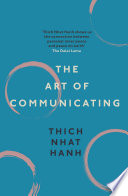

Mindfulness plays a crucial role in effective communication. The book emphasizes being present in conversations, which allows individuals to listen actively and respond thoughtfully. Mindfulness helps in recognizing non-verbal cues and understanding the emotional undertones of discussions. By practicing mindfulness, communicators can foster deeper connections, reduce misunderstandings, and create a more open dialogue. This concept encourages readers to cultivate awareness of their thoughts and feelings, as well as those of others, leading to more meaningful interactions.
Continue readingCompassion is highlighted as a key element in communicating effectively. The author argues that approaching conversations with empathy and understanding can transform the way we connect with others. Compassionate communication involves recognizing the shared human experience and responding with kindness and support. This idea encourages readers to practice active listening and to validate others' feelings, which can lead to more productive and harmonious interactions. The book provides practical strategies for integrating compassion into everyday conversations.
Continue readingStorytelling is presented as a powerful tool for engaging and influencing others. The book explains how narratives can capture attention, evoke emotions, and convey complex ideas in a relatable manner. By sharing personal stories or anecdotes, communicators can create a sense of connection and trust with their audience. The author emphasizes the importance of authenticity in storytelling, suggesting that genuine narratives resonate more deeply. This section of the book provides techniques for crafting compelling stories that enhance communication effectiveness.
Continue readingNon-verbal communication encompasses body language, facial expressions, and tone of voice, all of which significantly impact how messages are received. The book stresses that effective communicators must be aware of their non-verbal cues and those of others. Understanding and interpreting these signals can lead to better comprehension and fewer miscommunications. The author provides insights into how to align verbal and non-verbal messages to enhance clarity and connection. This idea underscores the importance of being mindful of the whole communication process.
Continue readingListening is often undervalued in communication, yet it is a critical skill. The book emphasizes that active listening involves fully engaging with the speaker, demonstrating interest, and providing feedback. This practice not only helps in understanding the message but also makes the speaker feel valued and respected. The author outlines techniques for improving listening skills, such as asking clarifying questions and summarizing what has been said. By prioritizing listening, individuals can foster stronger relationships and facilitate more effective dialogue.
Continue readingDifficult conversations are inevitable, and the book provides strategies for handling them with grace and effectiveness. The author suggests that approaching challenging discussions with openness and a willingness to understand differing perspectives can lead to constructive outcomes. Techniques such as maintaining a calm demeanor, using 'I' statements to express feelings, and focusing on solutions rather than problems are discussed. This idea empowers readers to tackle tough topics without escalating tensions, promoting healthier communication dynamics.
Continue readingTrust is the foundation of effective communication, and the book discusses how to build and maintain it through authenticity. The author argues that being genuine in interactions fosters a sense of safety and openness, encouraging others to communicate honestly as well. Strategies for building trust include being consistent, following through on commitments, and being transparent about intentions. This concept highlights the long-term benefits of authentic communication in both personal and professional relationships, leading to more fruitful interactions.
Continue reading